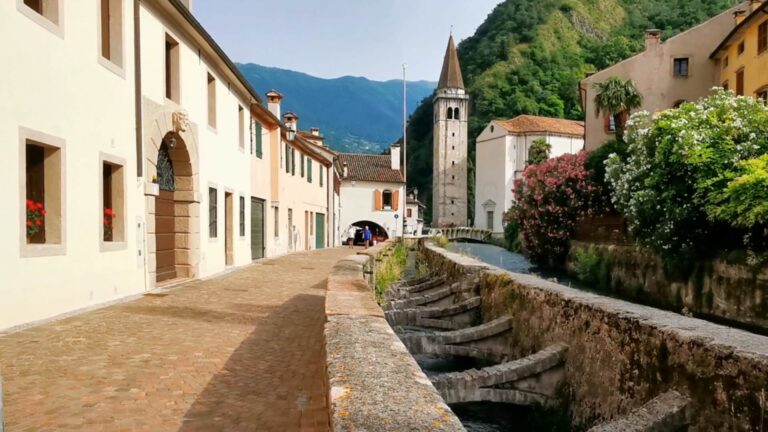ARTISTS’ ROADS
LE VIE DEGLI ARTISTI
watch the videos at the bottom of the page!
VITTORIO VENETO: SERRAVALLE
Vittorio Veneto. Titian in Serravalle: The Church Tells Its Story
The link between Titian and Serravalle is well documented.
This was the route to Pieve di Cadore, and in those days, travelling was never a swift affair: the artist built relationships with the noble families of Serravalle and the bishops of Ceneda.
In 1555, his daughter Lavinia would marry Cornelio Sarcinelli and settle in Serravalle, on the Calgranda.
On 29 May 1542, the Greater Council of Serravalle, meeting in the Palazzo Pubblico, resolved to commission an altarpiece for the high altar of the town church. It was to depict “three large figures: Our Lady, Saint Andrew, and Saint Vincent.”
The Madonna, to whom the church was dedicated, the titular saint of the parish church, and the saint after whom the then podestà, Vincenzo Ghisi, was named.
Such intertwining of civic and religious life was common practice at the time.
Six days later, the commission was awarded to Francesco da Milano, the same artist who, fifteen years earlier, had painted the church’s organ shutters.
Twenty-two days later, the contract passed to Titian, the official painter of the Venetian Republic.
The artist travelled to Serravalle, measurements and colour schemes were discussed, and a contract was drawn up between the civic community and the painter.
But then Titian departed for the court of Charles V and painted for the Pope, delaying delivery of the work.
He would later be asked to replace Saint Vincent with Saint Peter, as the podestà had changed in the meantime.
Thus began a long and complex dispute, over payments, over expectations, revealing the cultural mindset of the day.
The painting would not be delivered for more than ten years, and the final cost was astronomical.
Of the church that once housed the altarpiece, only the bell tower remains, the rest lost in the devastating flood that struck Serravalle in 1521.
In 1779, the new neoclassical building was consecrated, designed by Domenico Schiavi, the same architect who created the new church in Pieve di Cadore. A thread connects them.
And it is Saint Peter, symbol of the Roman Catholic Church, who unlocks the meaning of this work.
His white-haired, noble face directs our gaze to Mary. With powerful gesture, he presents the keys. Only she, from Heaven, can aid the Church on Earth.
This was the age of the Council of Trent, the great assembly of Christendom that issued stern responses to the claims of Protestant reformers.
His brother Andrew, representing the local church, holds firmly to a great cross, which also offers a chronological clue.
The Council of Trent would later replace that symbol, so directly evocative of Christ, with the X-shaped cross we know today.
Between the two saints, the Miraculous Draught of Fishes unfolds.
A tribute to Raphael, who depicted the same scene in tapestries for the Sistine Chapel.
But here, there’s a variation: Peter stands behind, perhaps a subtle challenge to ecclesiastical hierarchy.
The two apostles dominate the foreground: monumental, Michelangelesque.
They shape a pyramidal space that Andrew invites us to enter because the faithful are meant to participate. This is a principle Titian had already made central in his sacred art.
The triangle rises from earth to heaven and enters the circle of divine light.
Out of the depths emerge angelic figures.
Flecks of gold, gilded clouds, chubby cherubic heads.
And then there is colour, not confined within outlined forms, but poured freely.
This is the art of Titian.
Below, there is a carved stone fragment that evokes the name of Peter, a moulded remnant that seems to rise from the Roman age, the time of Christ and the apostles. We find the painter’s signature.
PHOTO 360 Serravalle di Vittorio Veneto. Move the mouse over the image
MORE EXPERIENCES!
Il Mondo di Tiziano:
- La sua casa, Villa Fabris sul Col di Manza
- A Ceneda, l’arco del cardinale che gli fu amico
- Revine e i suoi laghi, presenti nell’Amor Sacro e Amor Profano?
- A Meschio, la pala del Previtali che tanto ammirava
MULTIMEDIAL MAP: “ARTISTS’ ROADS – LE VIE DEGLI ARTISTI- EN”!

